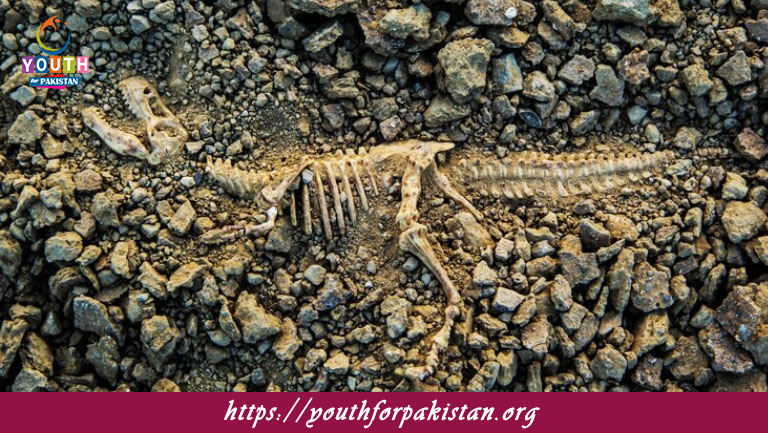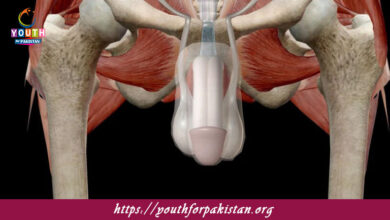Evidence Of Evolution MDCAT MCQs with Answers

Welcome to the Evidence Of Evolution MDCAT MCQs with Answers. In this post, we have shared Evidence Of Evolution Multiple Choice Questions and Answers for PMC MDCAT 2024. Each question in MDCAT Biology offers a chance to enhance your knowledge regarding Evidence Of Evolution MCQs in this MDCAT Online Test.
Which of the following is considered evidence of evolution?
a) Fossil records
b) Climate change
c) Weather patterns
d) Ocean currents
The study of anatomical similarities between different species is known as:
a) Comparative anatomy
b) Embryology
c) Paleontology
d) Genetics
Which type of evidence for evolution involves the comparison of embryonic development across different species?
a) Fossil evidence
b) Comparative anatomy
c) Molecular biology
d) Comparative embryology
The presence of vestigial structures in organisms is evidence of:
a) Adaptive evolution
b) Common ancestry
c) Genetic drift
d) Artificial selection
Which of the following is an example of a vestigial structure in humans?
a) Wisdom teeth
b) Heart
c) Liver
d) Lungs
The similarity in the DNA sequences of different species is evidence of:
a) Convergent evolution
b) Divergent evolution
c) Genetic drift
d) Artificial selection
Which scientist is best known for his work on the theory of evolution through natural selection?
a) Charles Darwin
b) Gregor Mendel
c) Louis Pasteur
d) Albert Einstein
The presence of homologous structures in different species indicates:
a) Adaptation to similar environments
b) Common evolutionary origin
c) Convergent evolution
d) Random genetic mutations
Which of the following is an example of homologous structures?
a) Wings of a bat and wings of a bird
b) Fins of a fish and limbs of a mammal
c) Shell of a tortoise and beak of a bird
d) Eyes of a squid and eyes of a human
Which evidence of evolution involves the study of fossilized remains of organisms?
a) Paleontology
b) Comparative anatomy
c) Embryology
d) Molecular biology
Which concept explains the similarity of the embryonic development stages in different vertebrates?
a) Evolutionary convergence
b) Homologous structures
c) Embryonic homology
d) Natural selection
The concept of adaptive radiation refers to:
a) The formation of new species in different environments
b) The extinction of species due to environmental changes
c) The evolution of similar traits in unrelated species
d) The migration of species to new habitats
The evolutionary process by which unrelated species evolve similar traits due to similar environmental pressures is known as:
a) Convergent evolution
b) Divergent evolution
c) Parallel evolution
d) Adaptive radiation
Which type of evidence involves the comparison of protein structures across different species?
a) Molecular evidence
b) Paleontological evidence
c) Anatomical evidence
d) Developmental evidence
The study of the geographical distribution of species is known as:
a) Biogeography
b) Comparative anatomy
c) Embryology
d) Genetics
The presence of similar genes in different species is evidence for:
a) Common ancestry
b) Evolutionary adaptation
c) Environmental selection
d) Genetic drift
Which of the following provides evidence for the evolution of species over time through the examination of transitional fossils?
a) Paleontology
b) Molecular biology
c) Comparative anatomy
d) Embryology
The existence of analogous structures in different species indicates:
a) A common evolutionary origin
b) Adaptation to similar environments
c) Divergent evolution
d) Random genetic changes
The study of similarities and differences in the anatomy of different species is called:
a) Comparative anatomy
b) Genetic analysis
c) Molecular biology
d) Paleontology
Which type of evolutionary evidence involves the study of organisms’ developmental stages?
a) Comparative embryology
b) Molecular biology
c) Fossil records
d) Biogeography
Which of the following is a type of molecular evidence for evolution?
a) DNA sequence comparison
b) Fossil evidence
c) Comparative anatomy
d) Embryonic development
Which concept refers to the process by which two species share a common ancestor but evolve different traits?
a) Divergent evolution
b) Convergent evolution
c) Parallel evolution
d) Adaptive radiation
What is the main purpose of studying transitional fossils?
a) To understand evolutionary changes between species
b) To compare anatomical structures
c) To analyze genetic sequences
d) To study embryonic development
Which of the following is NOT a type of evidence used to support the theory of evolution?
a) Fossil records
b) Comparative anatomy
c) Genetic engineering
d) Molecular biology
What type of evidence is provided by the discovery of homologous structures in different species?
a) Evidence of common ancestry
b) Evidence of evolutionary convergence
c) Evidence of genetic drift
d) Evidence of environmental adaptation
Which type of evidence for evolution involves studying the distribution of species across different continents?
a) Biogeographical evidence
b) Molecular evidence
c) Anatomical evidence
d) Embryological evidence
Which of the following is an example of an analogous structure?
a) The wings of birds and bats
b) The flippers of whales and the fins of fish
c) The forelimbs of humans and cats
d) The eyes of octopuses and humans
The study of homologous structures across different species provides evidence for:
a) Convergent evolution
b) Divergent evolution
c) Genetic drift
d) Adaptive radiation
The presence of similar biochemical pathways in different species indicates:
a) Adaptive evolution
b) Common ancestry
c) Convergent evolution
d) Environmental adaptation
Which of the following provides evidence for evolution through changes in species over time?
a) Fossil records
b) Genetic engineering
c) Artificial selection
d) Environmental changes
Which concept describes the evolution of similar traits in unrelated species due to similar environmental pressures?
a) Convergent evolution
b) Divergent evolution
c) Parallel evolution
d) Adaptive radiation
The study of the development of organisms from embryo to adult is known as:
a) Comparative embryology
b) Molecular biology
c) Paleontology
d) Comparative anatomy
Which of the following is an example of a transitional fossil?
a) Archaeopteryx
b) Homo sapiens
c) Pan troglodytes
d) Canis lupus
Which type of evidence involves the comparison of the molecular sequences in different species?
a) Molecular evidence
b) Anatomical evidence
c) Paleontological evidence
d) Developmental evidence
Which type of evidence shows the evolutionary changes in species over geological time?
a) Fossil evidence
b) Embryological evidence
c) Biogeographical evidence
d) Molecular evidence
Which concept explains the evolutionary process where species evolve similar traits due to similar selective pressures?
a) Convergent evolution
b) Divergent evolution
c) Parallel evolution
d) Adaptive radiation
The presence of similar protein sequences in different species is evidence for:
a) Common ancestry
b) Convergent evolution
c) Genetic drift
d) Adaptive radiation
Which type of evidence involves examining the distribution of species across different geographic areas?
a) Biogeographical evidence
b) Molecular evidence
c) Paleontological evidence
d) Comparative anatomy
Which concept describes the evolution of diverse species from a common ancestor in different environments?
a) Adaptive radiation
b) Convergent evolution
c) Divergent evolution
d) Parallel evolution
The similarity of the genetic code across different species is evidence for:
a) Common evolutionary origin
b) Convergent evolution
c) Genetic drift
d) Environmental adaptation
Which type of evidence provides insights into evolutionary changes through the examination of physical structures?
a) Anatomical evidence
b) Molecular evidence
c) Embryological evidence
d) Biogeographical evidence
The presence of similar developmental stages in different species provides evidence for:
a) Common ancestry
b) Adaptive evolution
c) Convergent evolution
d) Genetic drift
Which type of evidence involves the study of the fossil record to understand evolutionary changes?
a) Paleontological evidence
b) Molecular evidence
c) Anatomical evidence
d) Developmental evidence
The presence of similar but unrelated species in similar environments is an example of:
a) Convergent evolution
b) Divergent evolution
c) Parallel evolution
d) Adaptive radiation
The study of the evolutionary relationships between species based on genetic information is known as:
a) Molecular phylogenetics
b) Comparative anatomy
c) Paleontology
d) Developmental biology
Which type of evidence includes the study of the distribution of species and their fossils across different continents?
a) Biogeographical evidence
b) Molecular evidence
c) Anatomical evidence
d) Developmental evidence
The evolution of similar traits in species from different evolutionary backgrounds due to similar environmental pressures is called:
a) Convergent evolution
b) Divergent evolution
c) Parallel evolution
d) Adaptive radiation
Which type of evidence is used to study evolutionary changes by examining the physical features and structures of organisms?
a) Anatomical evidence
b) Molecular evidence
c) Developmental evidence
d) Biogeographical evidence
Which concept explains the similarities between the early developmental stages of different species?
a) Comparative embryology
b) Molecular biology
c) Paleontology
d) Biogeography
The presence of fossilized remains of extinct species provides evidence for:
a) Evolutionary change over time
b) Convergent evolution
c) Genetic drift
d) Environmental adaptation
If you are interested to enhance your knowledge regarding Physics, Chemistry, Computer, and Biology please click on the link of each category, you will be redirected to dedicated website for each category.





